David Blaine performed on Jimmy Fallon, and I caught his set on YouTube. The trick I write about occurs between 5:12-8:30. See if you can figure it out yourself before continuing.
Blaine lays 10 cards on the table and says “Ten cards, correct?” Everyone, including myself, agrees there are 10 cards on the table. (5:33)
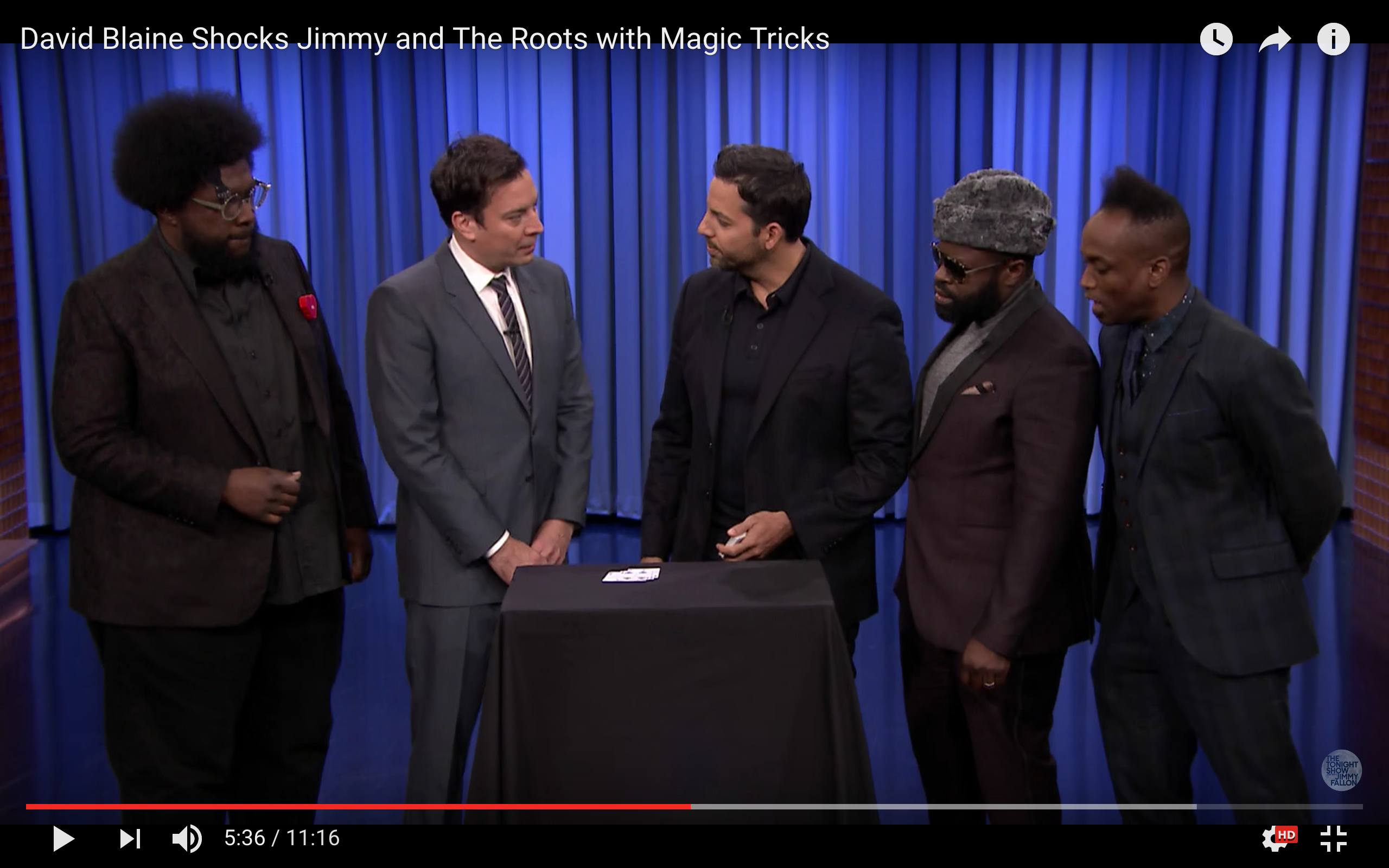
Keep watching for the next 10 seconds (5:33-5:43). Do you see what he does?
Here’s a look.

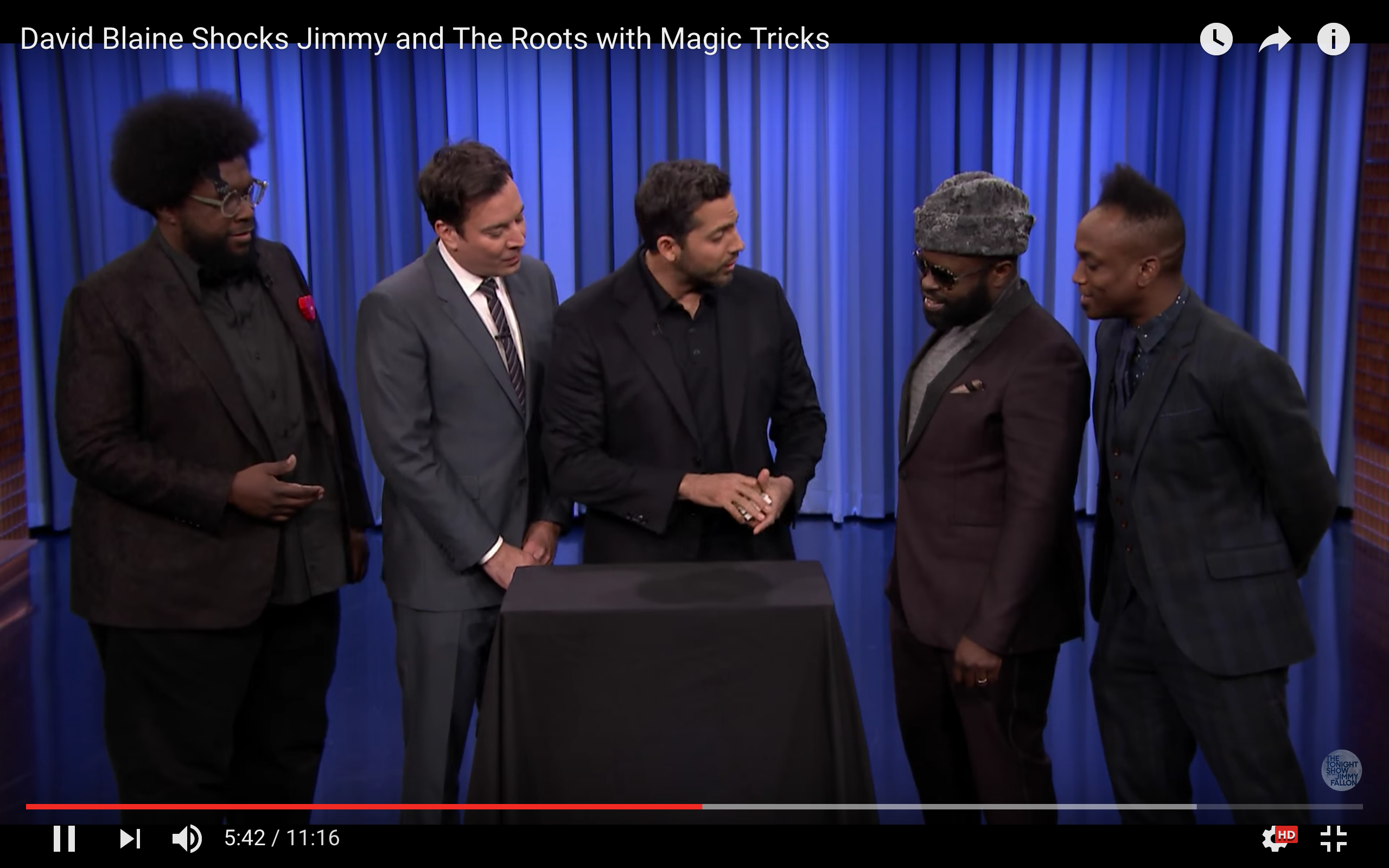
He slides the 10 cards from the table back on top of the deck. There’s no reason for him to do this. Immediately after placing the cards on the deck, he takes them back off.
When David takes the cards back off the deck, he secretly adds 3 more cards from the deck. Since the deck is face-down, those 3 cards he added are face-down. The first 10 cards he’s holding are face-up, and the bottom 3 are face-down. (5:42).
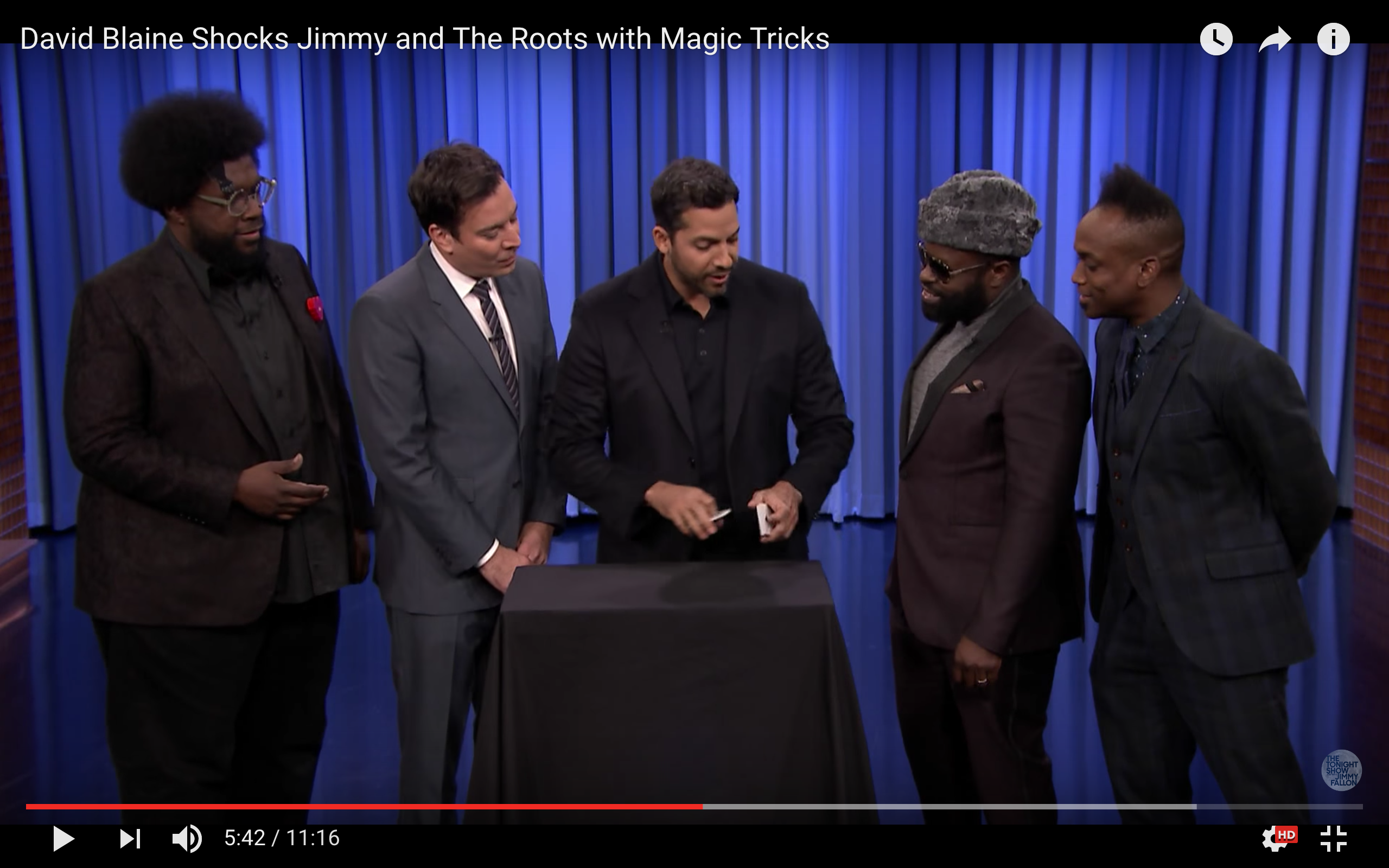
This next part doesn’t go well for David. He says to the guy on his left “If you’re skeptical, then you do the count yourself. Look, feel it, make sure that’s one card,” and hands the guy the first card from the pile.
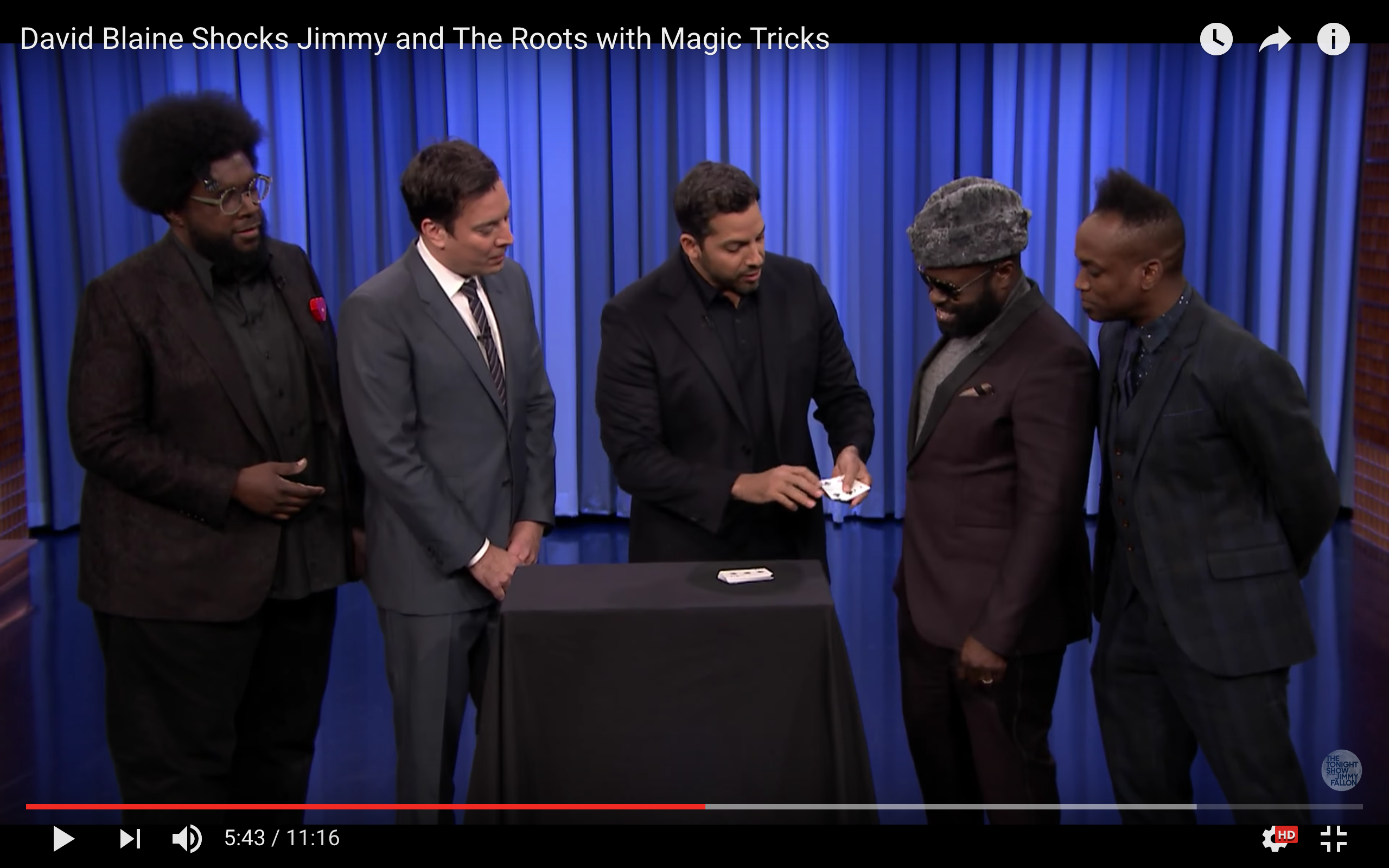
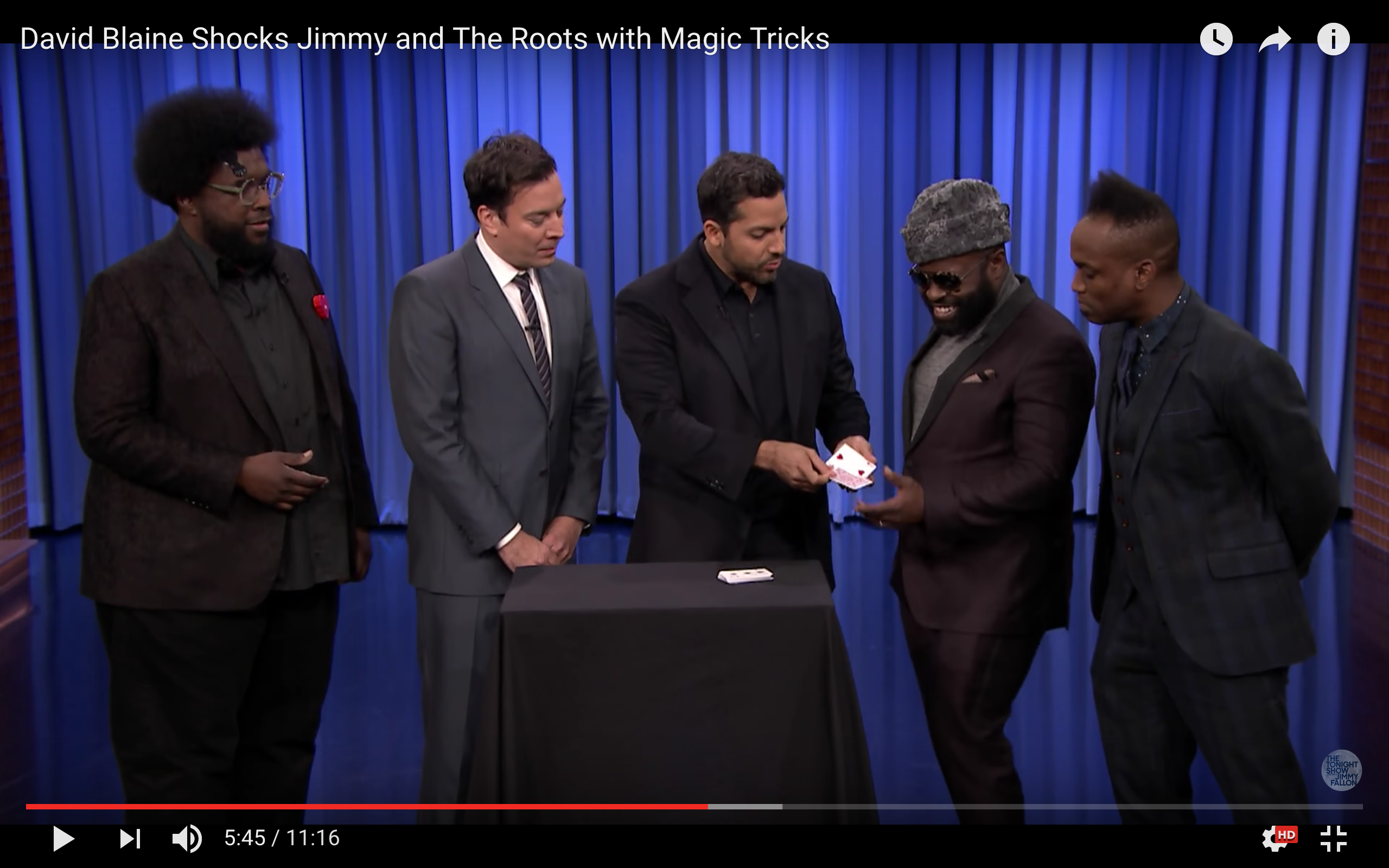
When David says this to the guy, he expects the guy to take the card he was handed, agree it was one card, and then hand it back to David. Unfortunately for David, when he hands the guy the first card under the premise of “make sure that’s one card”, the guy proceeds to almost ruin David’s trick by placing it on the table and saying “one” because he thought he going to count all the cards by placing them on the table. If the guy continued counting this way, he would see there are 13 cards.
David wants the guy to count each card by flipping it upside down and adding it to the bottom of the pile. When the guy no longer sees any face up cards, he assumes that he has reached a card he has already counted. In reality, he will reach one of the three face-down cards David added to the bottom of the pile.

When this happens, David immediately goes into recovery mode and says “No, no, here. And then put it upside down on the bottom like a real count.” What a “real count” is, I don’t know.

After recovering, David teaches the guy how to properly count the cards, and it goes more smoothly. David can safely hand the guy the entire pile knowing he will continue to count this way.
Counting in this strange way, the guy confirms that there are 10 cards (really, there are 13). David has him hold the cards against his chest.

At 6:14, David turns to Jimmy Fallon and does a classic force of the 3 of diamonds. If you’re not familiar with how this works, David starts dropping cards from the deck one-by-one, and says “As I go through, I just want you to yell ‘stop’, it doesn’t matter.” It’s the illusion of giving Jimmy the freedom to say “stop” at any point and randomly pick a card this way.
In reality, David is dropping the cards as he explains what he wants Jimmy to do, and by the time Jimmy understands what’s going on, he has a very small window to say “stop,” which David can delay however he sees fit. David uses his finger to keep track of where the forced card is.
David forces a 3 of diamonds onto Jimmy. And because he “randomly” selected the 3 card, David says he adds three cards to the 10 the guy is holding against his chest (which is really already 13 cards).
Things get clever here.
When David tells the guy to count out the cards (on the table, more naturally this time), he does something sneaky. Can you see it? (7:00-7:13)
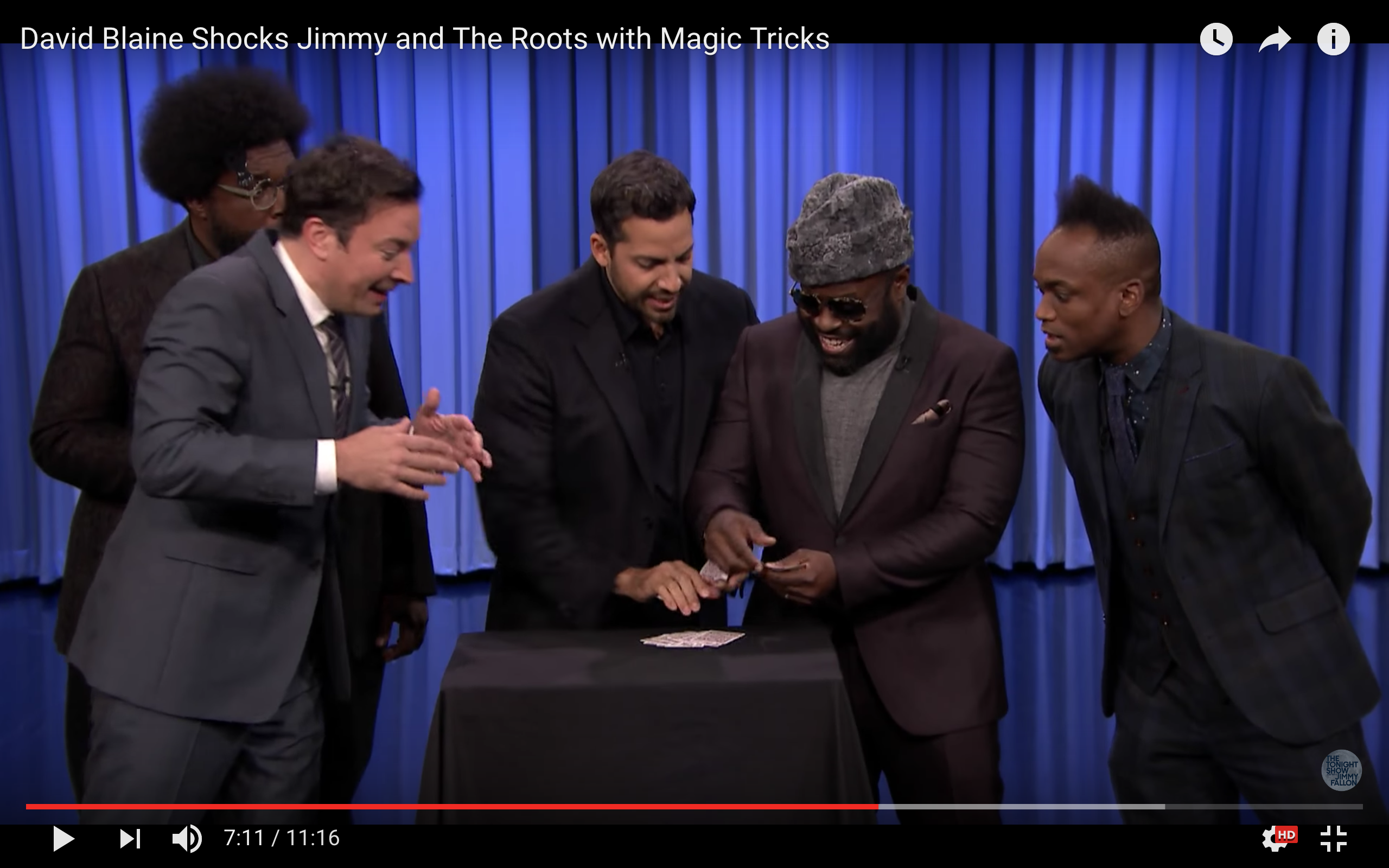
After the guy counts the 10th card by placing it on the table, David excitedly slaps his hand on the cards and says “10! That’s the original number.”
When he slaps his hand on the table, he’s actually placing 7 more cards onto the pile.

There are really 20 cards on the table when the guy has finished counting his 13 cards. David tells the guy to press the cards against his chest again. He then asks the guy to the far right of the screen to pick a number up to 10.
When you ask someone to pick a number between 1-10, that person will select 7 the vast majority of the time. The person David asked did something unusual in picking 3 instead. Had he picked 7, David would have stopped here, and said “Okay, I magically teleported 7 cards to the pile on his chest.”
Instead, he asks the person to the left of the screen to then pick a number between 1-5. Why between 1-5? Because David would ideally like to get to the number 7 by adding the first person’s 3 with a 4 from the second person. The person picks 4, which is expected because 3 was already picked, and when you say “between 1-5” people don’t usually select 1 or 5.
There are plenty of ways David could get to 7. If the second guy picked 2 instead of 4, David could then ask Jimmy to pick a number between 1-2. If Jimmy had picked 1, then David would have 7. Or, even if the very first guy says 10, David could palm more cards and slap them on the table just like he did last time around.
There’s a route David could take for any answer. The greatest risk in this trick is David not being clear about how he needs the cards counted.
